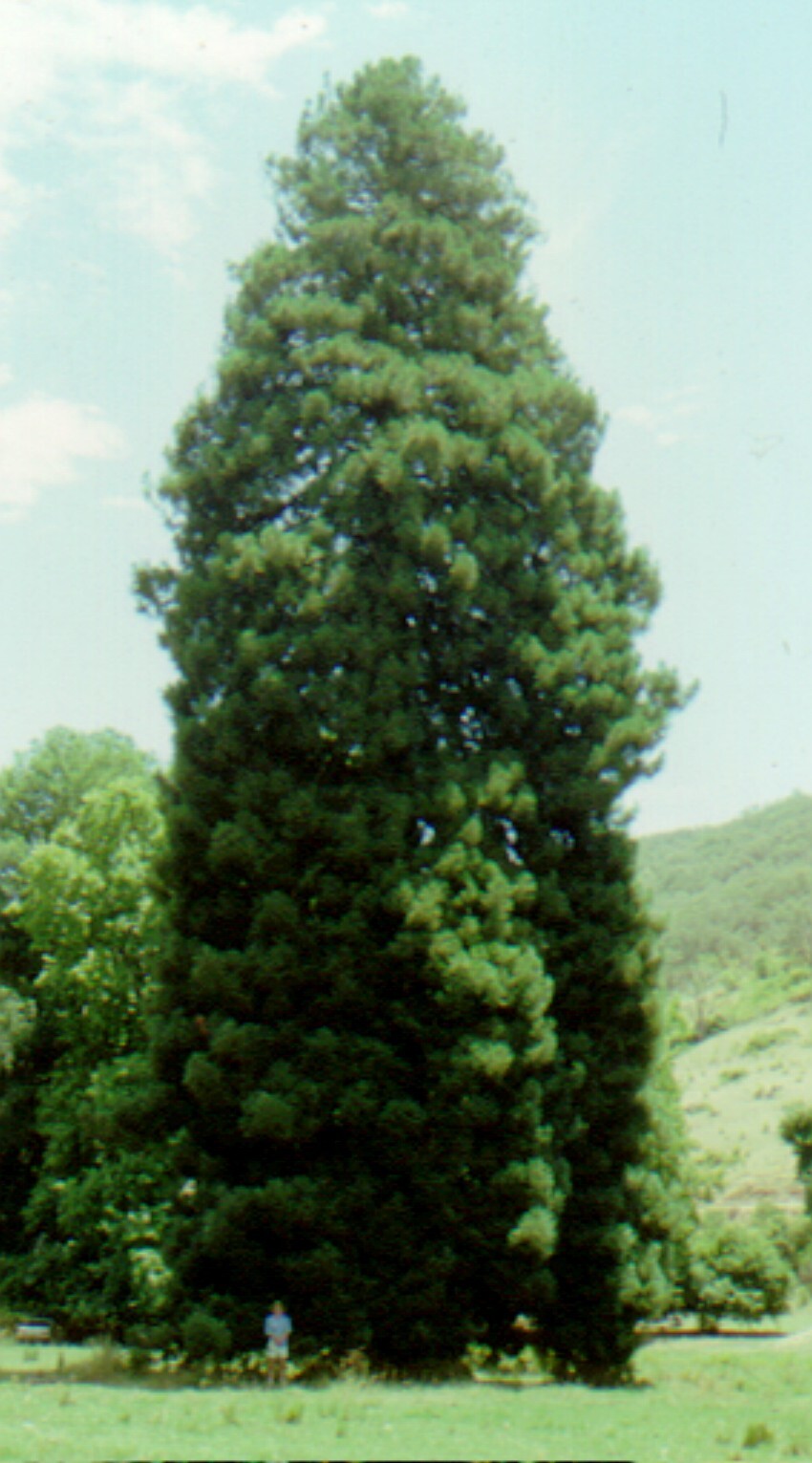Sequoia sempervirens
(D.Don) Endl. Californian RedwoodConical trees to 100 m tall, lower half often without branches. Bark reddish brown, fibrous and spongy. Leaves on main branchlets c. 6 mm long; leaves on lateral branchlets to 30 mm long, with prominent, white abaxial stomatal bands. Male cones globular to ovoid, 2–5 mm long. Female cones 1.3–3.5 cm long. Seed flattened, 3–6 mm long, leathery.
GipP, CVU, HSF, HNF, OtR.
Native to west California. Sequoia semprevirens is the tallest conifer in the world, obtaining a height of up to 110 m and a girth of over 9 m in its native range. Often planted as an ornamental, it is known to self-seed in wet forest in Victoria.
Plantations of now-impressive trees in the Otway Ranges and near Warburtin were estblished in the 1930s and have become popular tourist destinations.
Timber of S. sempervirens is durable and readily worked and was once widely used for doors, architraves, skirting boards and other trimming timbers in Melbourne houses between about 1910 and 1940.
 Spinning
Spinning


